The EPOMAKER Shadow-X is a 70% gasket mounted pre-built keyboard, that offers flexibility of three modes of connectivity. This 70% layout is also better know as the FRLTKL. Basically it is a TKL without the Fn row. It comes offered in four options of switches, as seen below:
- Epomaker Flamingo Switch
- Gateron Pro Yellow Switch
- Epomaker Budgerigar Switch
- Epomaker Bluebird Switch
The EPOMAKER Shadow-X retails for US$80, and is only available in one colour option.
Tech specs
| Dimensions | 370 x 130 x 48 mm |
| Weight | 0.9kg |
| Mounting type | Gasket-mounted |
| Plate | Polycarbonate (PC) |
| PCB | Hotswappable, south-facing (Support 3-pin and 5-pin switches) |
| Software | EPOMAKER Shadow-X Driver |
| Included Keycaps | XDA profile PBT |
| Stabilizers | Plate-mounted |
Unboxing
Below is what you’ll get in the EPOMAKER Shadow-X box:

- Shadow-X keyboard
- Braided USB-C cable
- Keycap puller
- Extra keycaps
- Extra switches
- 2.4GHz receiver
Build quality and design
The Shadow-X only comes in a single colour option, which a grey colour. The keyboard is your typical plastic board, but at first glance it looks like a aluminium board. The board is decently heavy for a plastic board, weighing in at 900 grams. Build quality of the Shadow-X is solid. The plastic doesn’t creak of flex too much under pressure.
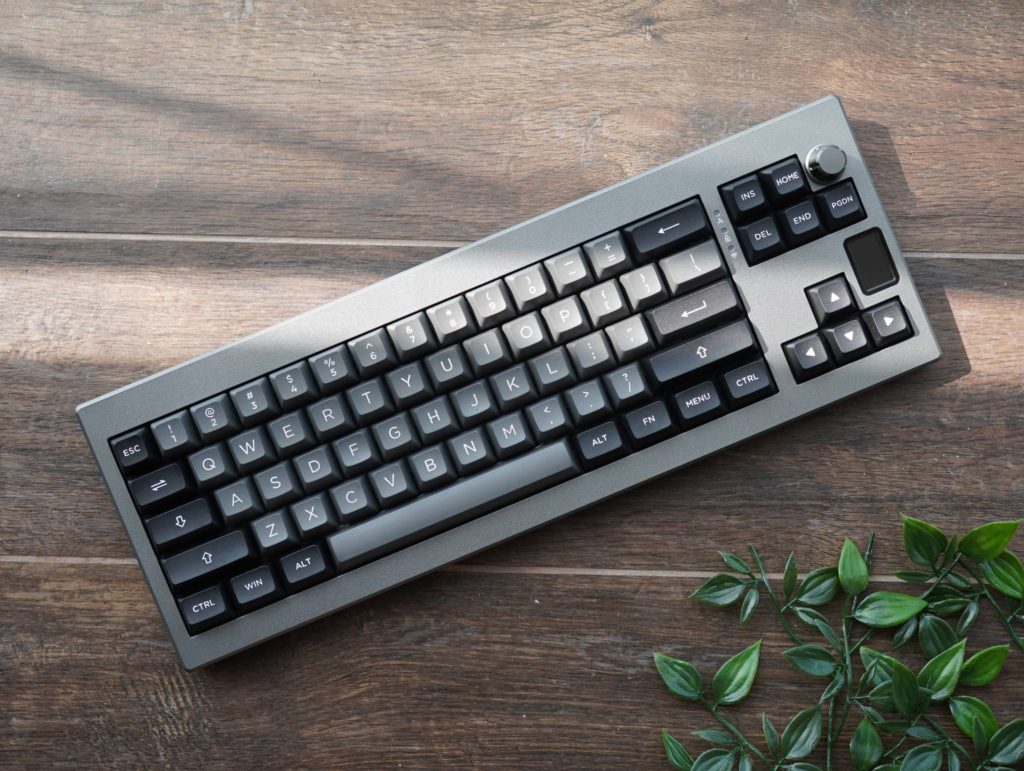
As the Shadow-X features pretty sizeable head and chin bezels (17mm and 13mm respectively), the overall size of the keyboard does come quite close to a TKL. Unique design elements of the Shadow-X include a rotary knob and a LCD screen above the arrow cluster. Shadow-X has a centered USB port and even comes with a little slot to house the 2.5GHz wireless USB receiver if you are not using it (thoughtful design!).

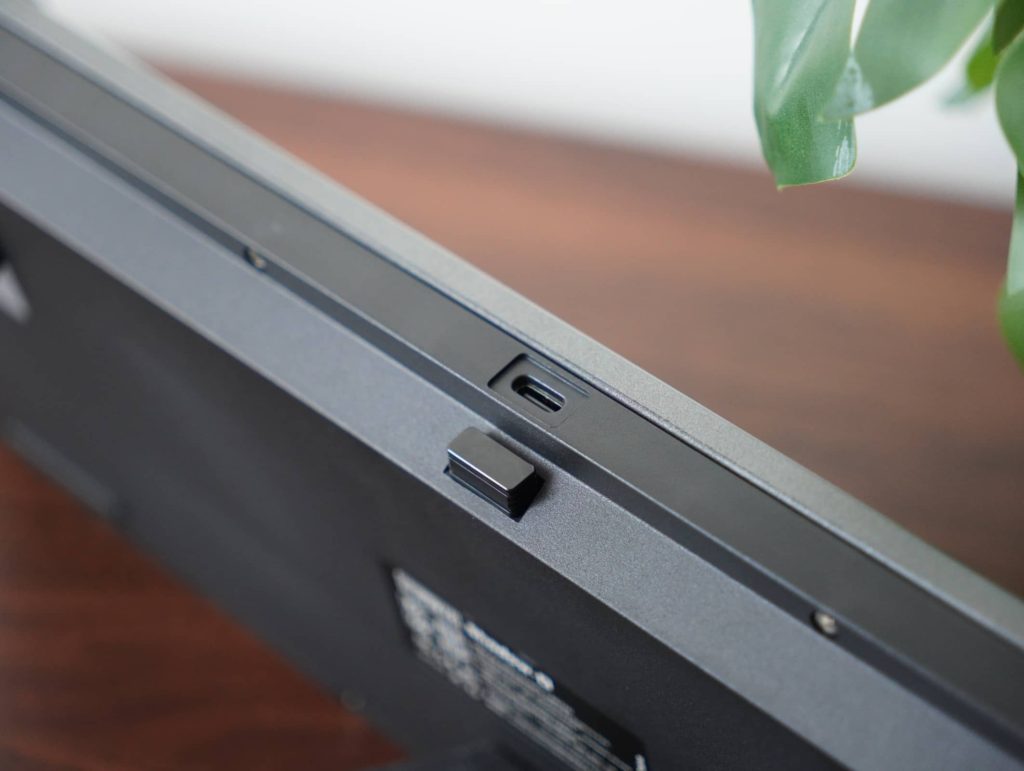
The Shadow-X utilises two adjustable plastic feet commonly found on plastic board which allows you to adjust the typing angle. I found the default angle to be comfortable enough for me, but of course your preference may vary. There is also RGB backlighting as well.
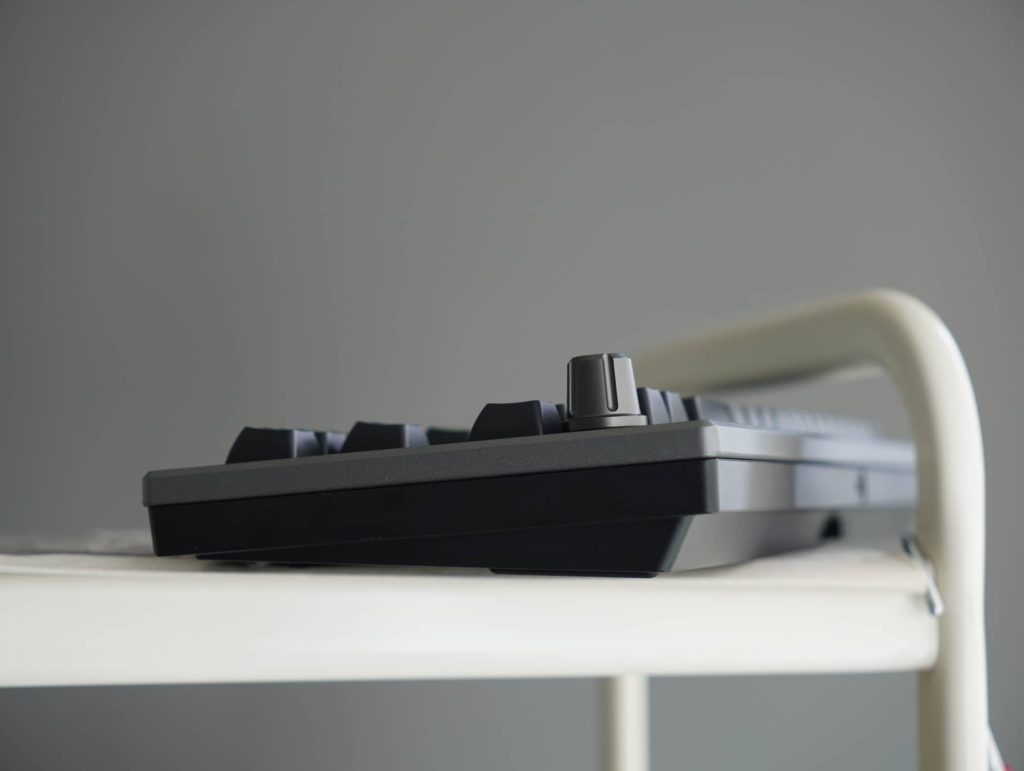
The default keycaps that come with the Shadow-X are what I’m guessing XDA profile, and they are made from PBT plastic. The colours are of two shades of grey tones to match the colour of the case. If you want some pop of colours, EPOMAKER included spare accent keycaps in yellow. Legends are double-shot and and have a centered justification. Personally I prefer cheery profile keycaps, but the more conical shaped style of these keycaps are also pretty nice to type on.
Typing acoustics & experience
The Shadow-X is a gasket mounted board. The PCB and PC plate is sandwiched with a poron layer, and sits on a large bottom silicone dampener. There are 4 gaskets tabs each on the top and bottom of the plate, which have quite some flex cuts running across the alphas. And interestingly, there is a daughterboard connection.

The overall typing feel is ok, it isn’t does flex as what I thought it would when disassembled. It is by no means stiff. Comparing the Shadow-X with the High65 V2, the High65 V2 have more discernible softness in the typing feel.
I’d say the stock sound quite good and is useable right out of the box as there isn’t hollowness, though you might want to re-lube the stabilizers. The build I have uses the Epomaker Flamingo linear switch. The overall sound profile is a little muted leaning towards tones of the lower frequencies. There are definitely some elements of deeper bottom out. You can check out the stock sound test below, where I found the recording to be slightly higher pitched than what I hear in real life.
Knob, screen, and software
If you’re expecting the knob to control your media volume then you’re going to be disappointed. The knob on the Shadow-X is merely serves as an aesthetic element that allows you to switch between the three types of connectivity modes – (1) wired, (2) Bluetooth, and (3) 2.4GHz wireless.
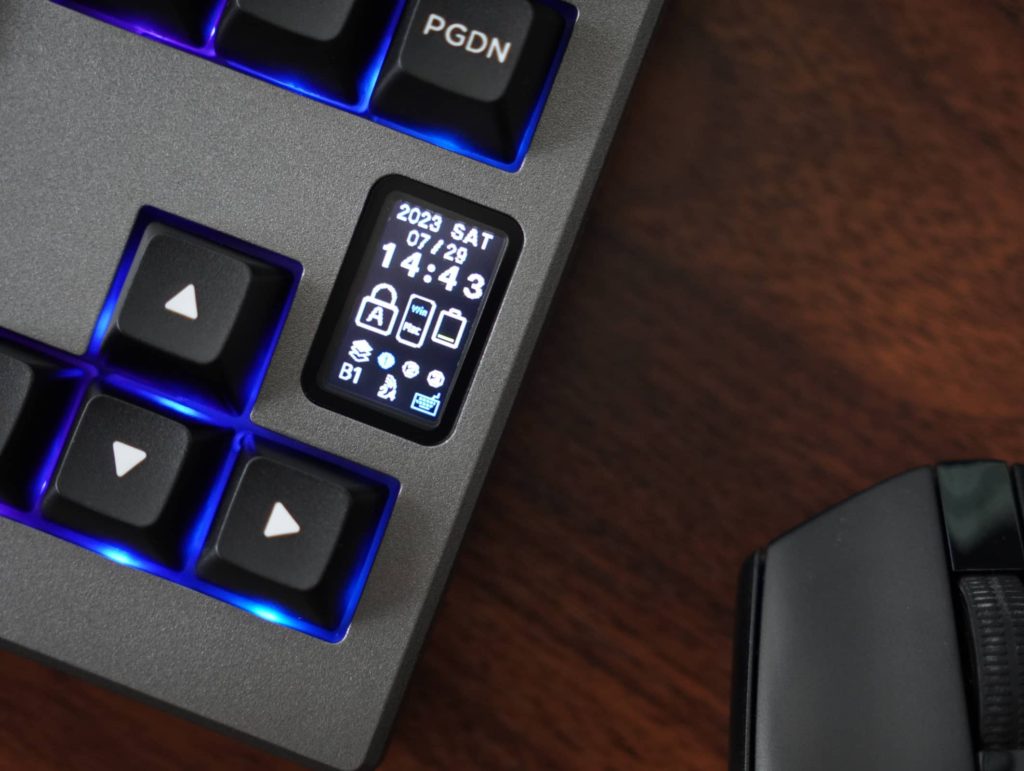
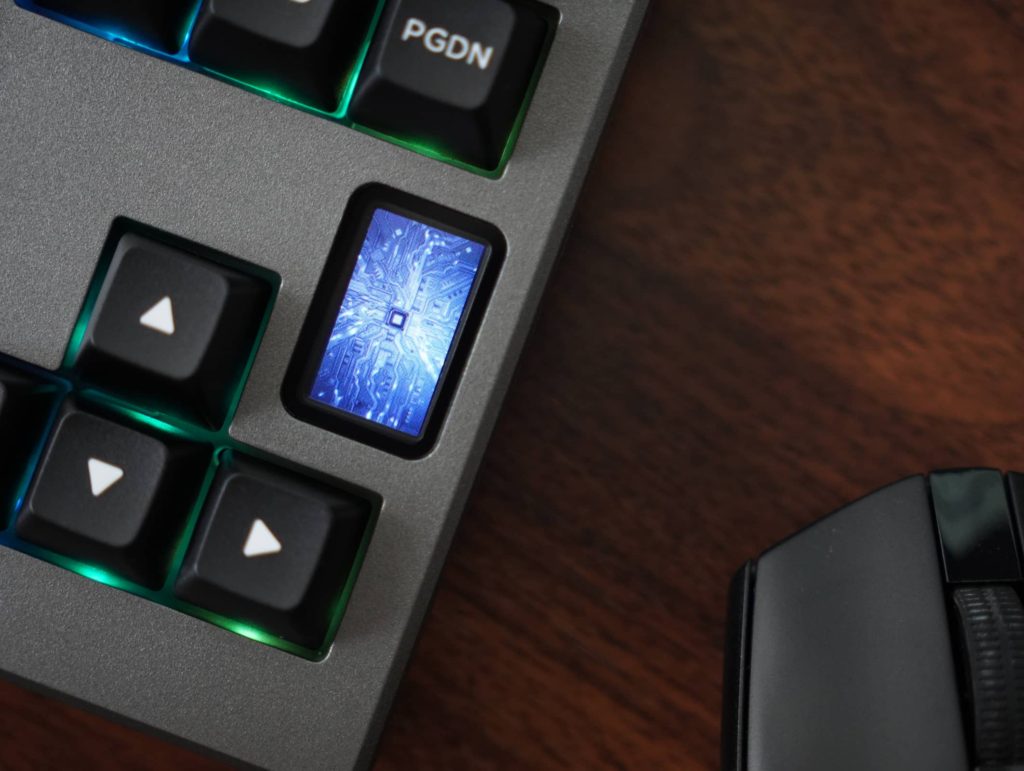
The screen displays useful detail about the date and time, as well as certain indicators on battery and caps lock to name a few. Right out of the box, the date and time may not be synced so you have to download the Shadow-X Driver software to update it.

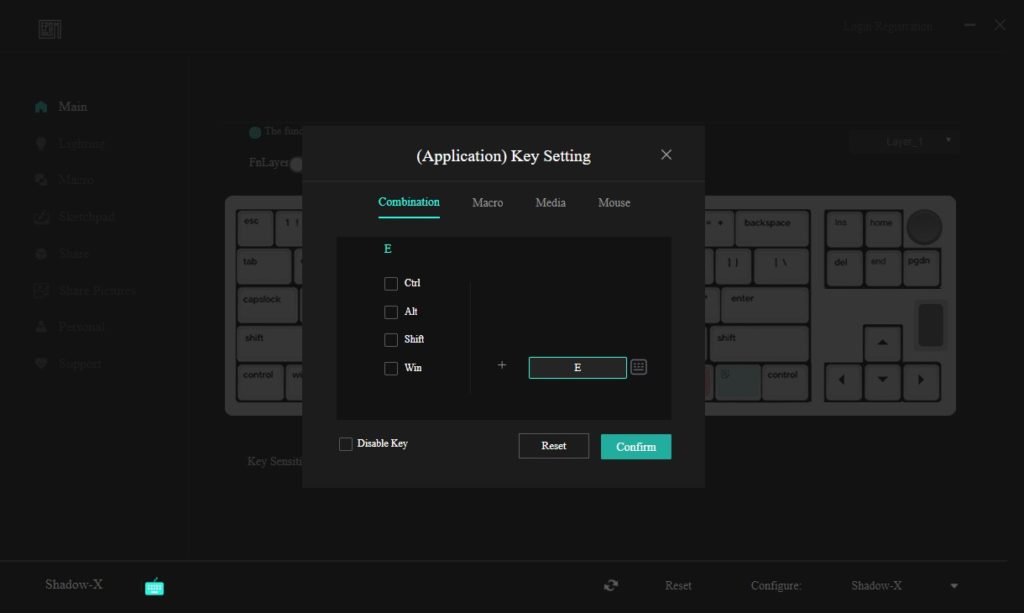
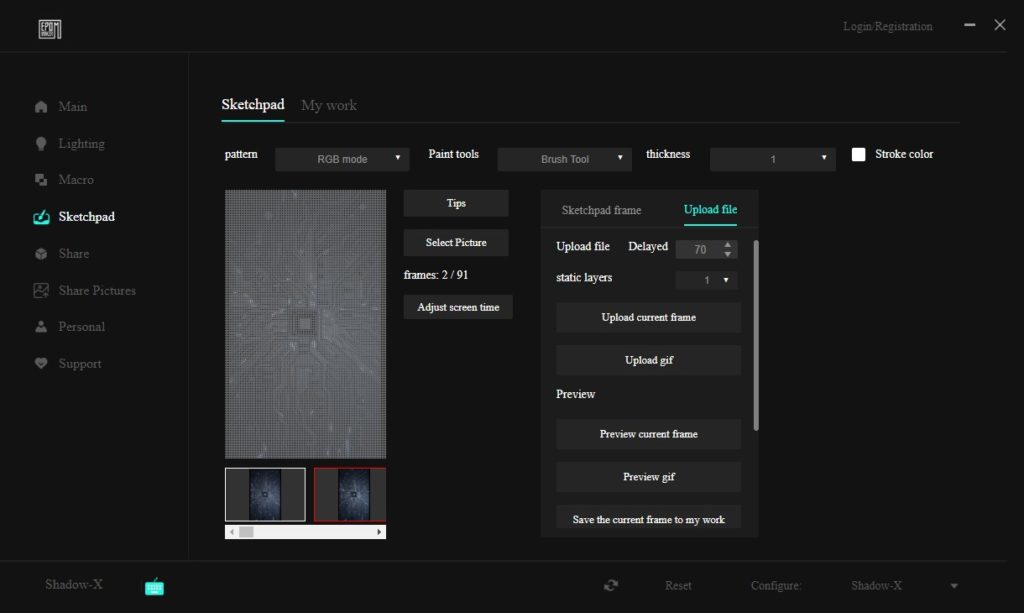
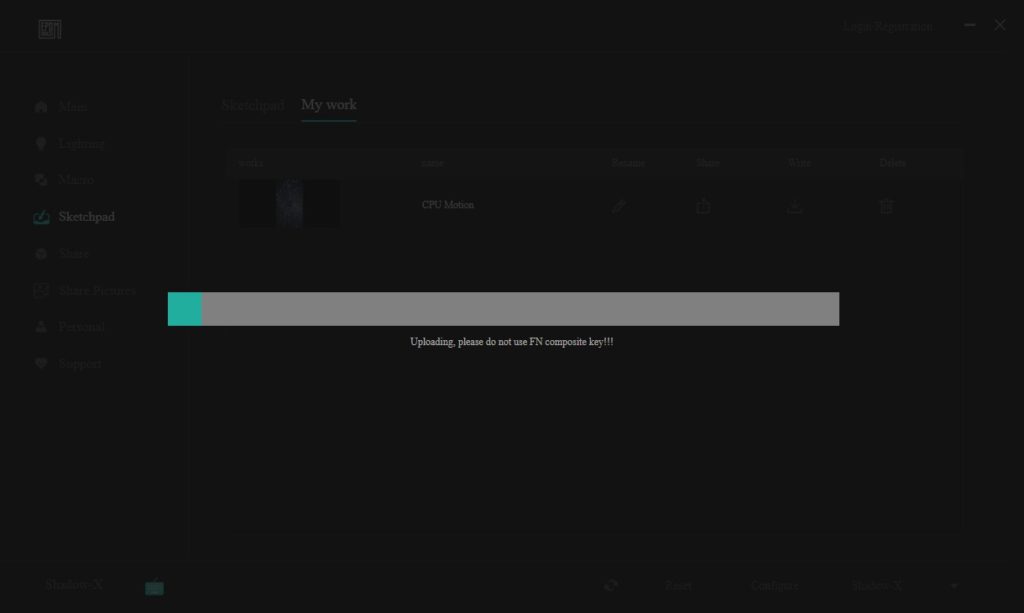
The user experience on the software is quite clunky. But you’d need it if you want to create customised GIFs on the screen, or customise key strokes or create macros. Having said that, there is seems to be no way to delete an unwanted custom screen if you accidentally loaded the wrong one so you may be stuck cycling through your failed attempts. Doing a reset on the keyboard doesn’t remove what you load via the software, so hopefully EPOMAKER comes up with an update for it.
Automatic support for Mac and Windows
EPOMAKER advertises that the Shadow-X is compatible with both Mac and Windows. What was impressive is that the Shadow-X can actually detect what OS is the keyboard is on and automatically changes the key layout to match the OS.
Conclusion
I think the Shadow-X is one of the better looking pre-built keyboards in the market so far, and it offers a unique FRLTKL layout not commonly seen in the pre-build space. For $80, I think it’s a fairly priced if you are fan of the design and addition of the screen. Could be a good board to start your keyboard as the there isn’t much mods you need to do “fix” the stock sound.

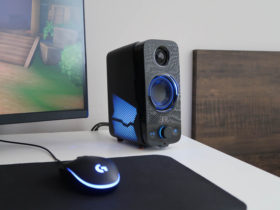
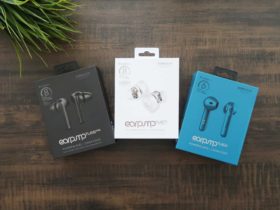
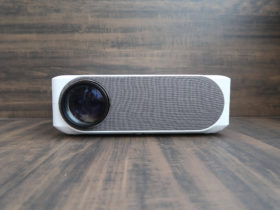
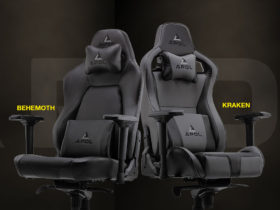
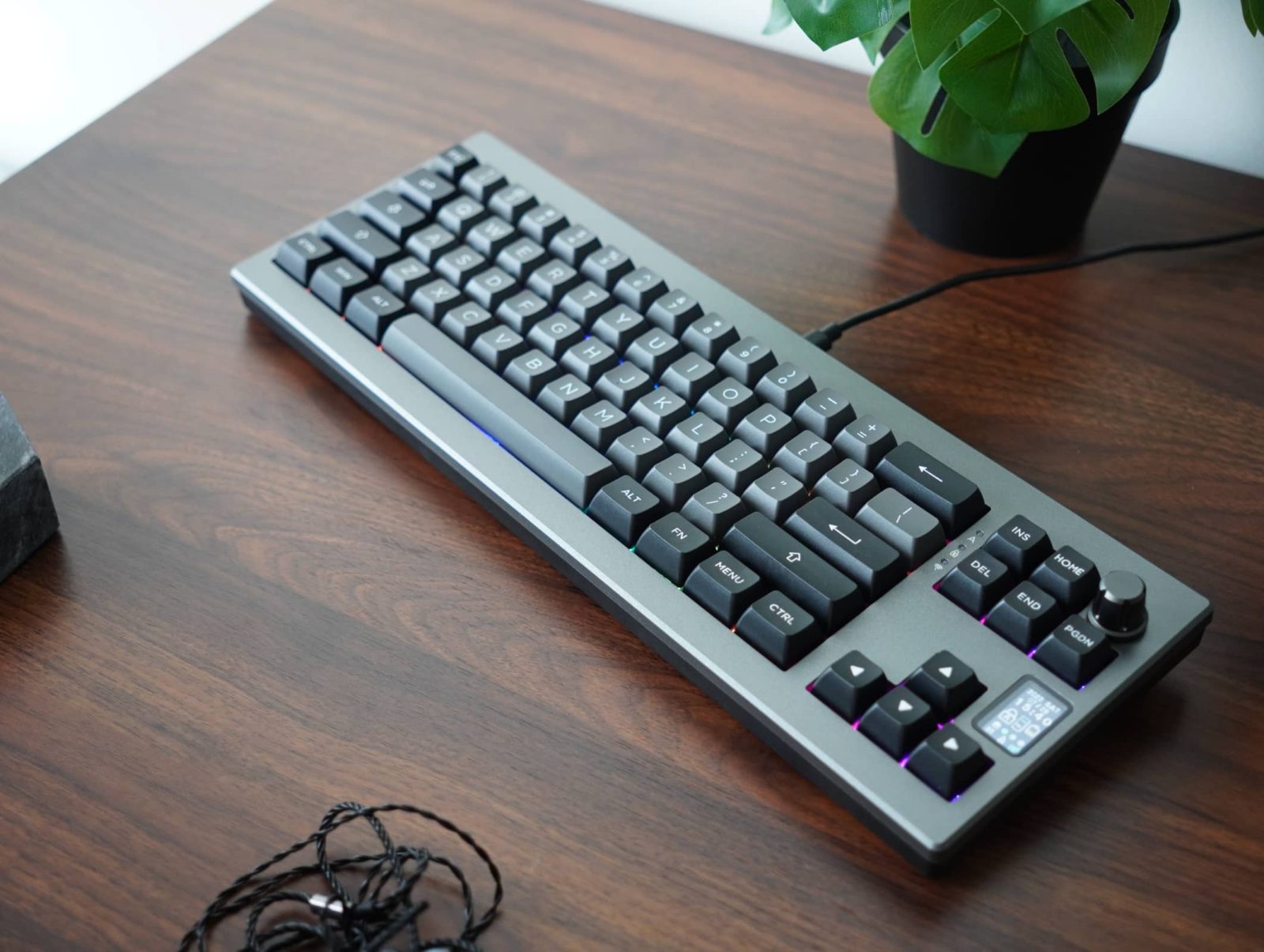








Leave a Reply